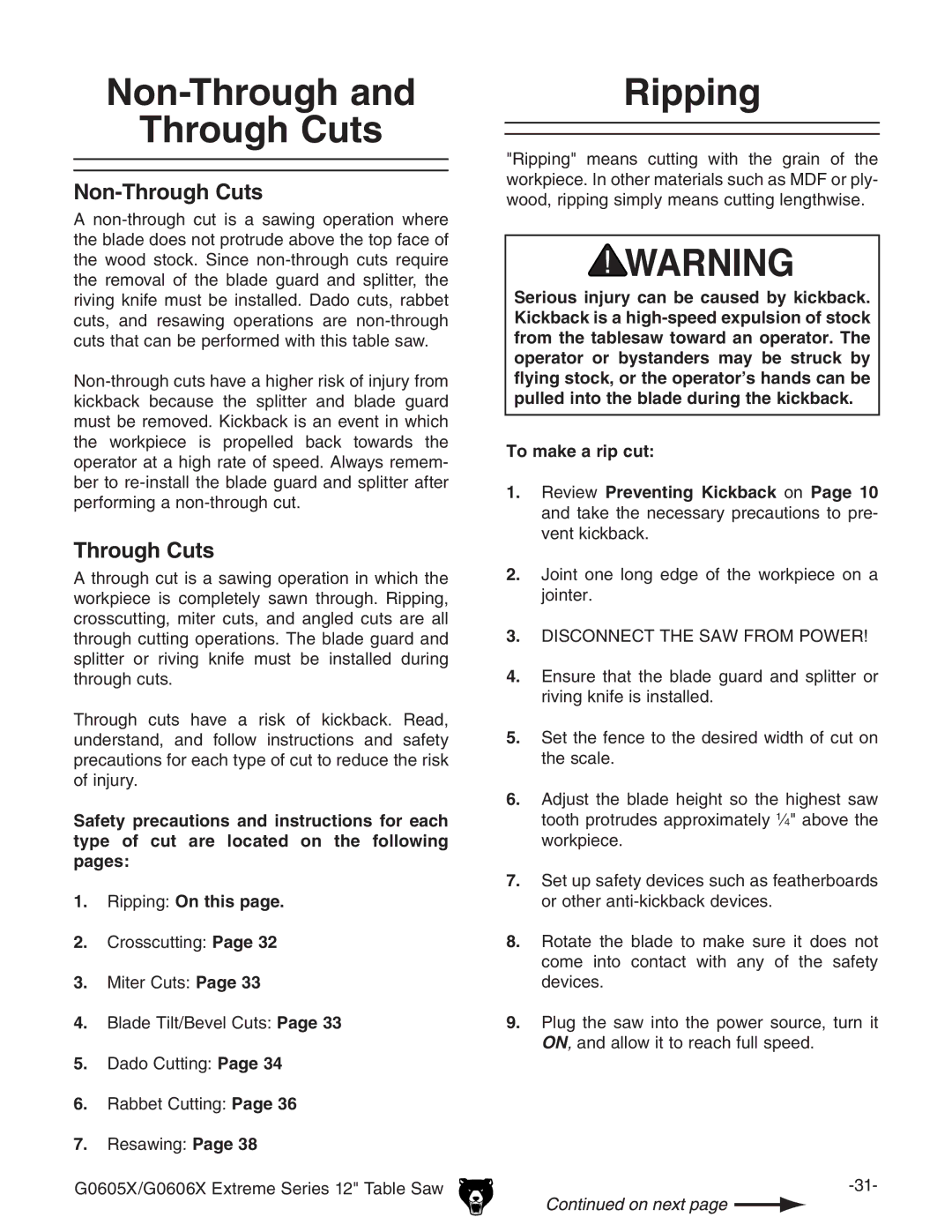
Non-Through and
Through Cuts
Non-Through Cuts
A
Through Cuts
A through cut is a sawing operation in which the workpiece is completely sawn through. Ripping, crosscutting, miter cuts, and angled cuts are all through cutting operations. The blade guard and splitter or riving knife must be installed during through cuts.
Through cuts have a risk of kickback. Read, understand, and follow instructions and safety precautions for each type of cut to reduce the risk of injury.
Safety precautions and instructions for each type of cut are located on the following pages:
1.Ripping: On this page.
2.Crosscutting: Page 32
3.Miter Cuts: Page 33
4.Blade Tilt/Bevel Cuts: Page 33
5.Dado Cutting: Page 34
6.Rabbet Cutting: Page 36
7.Resawing: Page 38
G0605X/G0606X Extreme Series 12" Table Saw
Ripping
"Ripping" means cutting with the grain of the workpiece. In other materials such as MDF or ply- wood, ripping simply means cutting lengthwise.
Serious injury can be caused by kickback. Kickback is a
To make a rip cut:
1.Review Preventing Kickback on Page 10 and take the necessary precautions to pre- vent kickback.
2.Joint one long edge of the workpiece on a jointer.
3.DISCONNECT THE SAW FROM POWER!
4.Ensure that the blade guard and splitter or riving knife is installed.
5.Set the fence to the desired width of cut on the scale.
6.Adjust the blade height so the highest saw tooth protrudes approximately 1⁄4" above the workpiece.
7.Set up safety devices such as featherboards or other
8.Rotate the blade to make sure it does not come into contact with any of the safety devices.
9.Plug the saw into the power source, turn it ON, and allow it to reach full speed.
